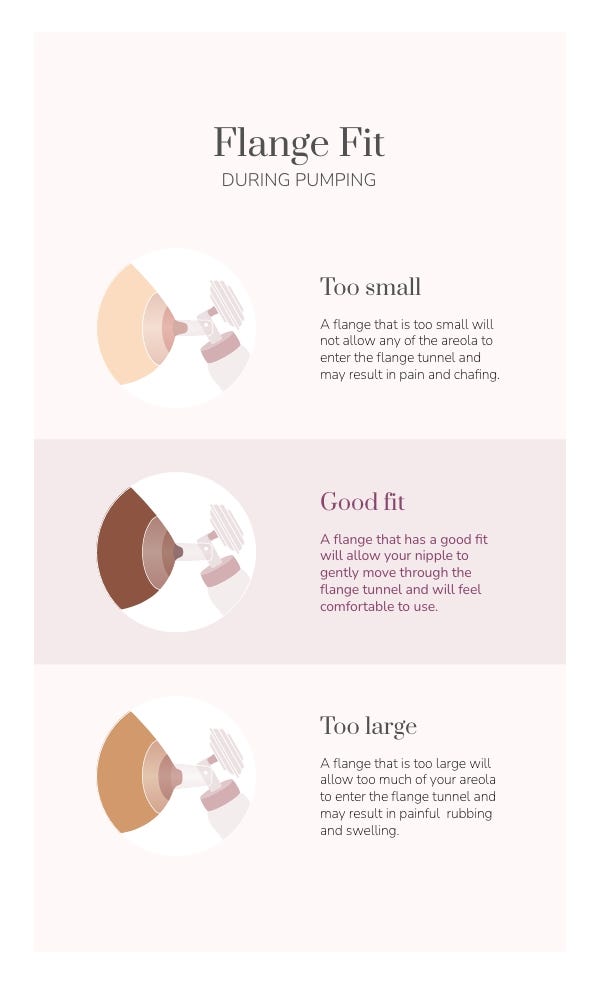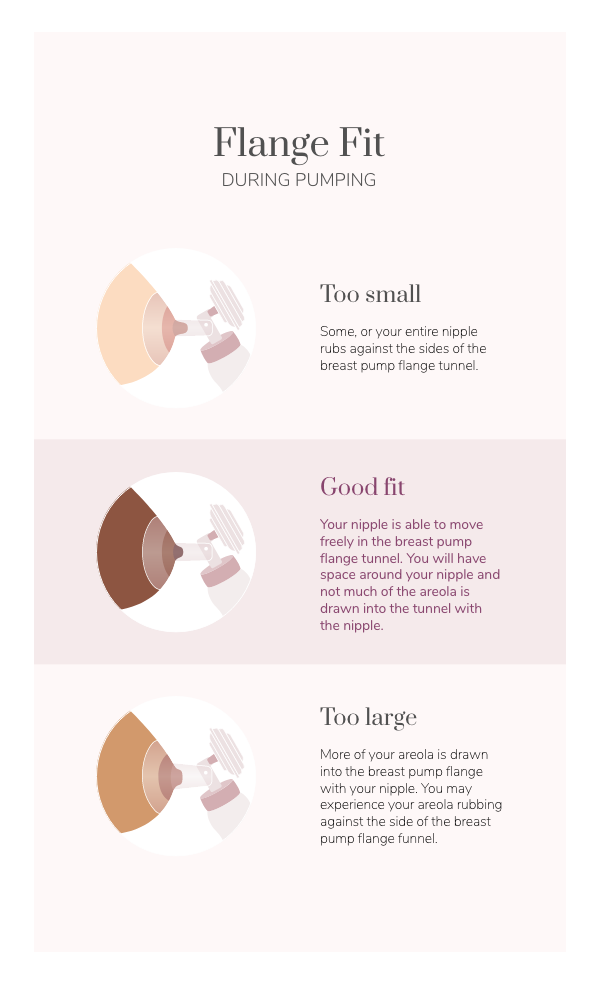What is a Breast Pump Flange?
A breast pump flange, also known as a breast shield, is a plastic or silicone piece that fits directly over your nipple to form a seal. When you begin to pump, this creates a vacuum seal that should only draw your nipple into the flange tunnel for maximum milk extraction. Many pumps come with 24mm flanges, but you may need to select smaller or larger flanges based on your measurement and experience when pumping.
Having the wrong flange size can affect milk supply, cause nipple pain and damage, and can even lead to clogged milk ducts (ductal narrowing) and mastitis. Having the correct flange size is also key for allowing adequate pump suction and milk removal.
For first-time pumps, seeing a lactation specialist can be helpful in determining the correct flange size for your nipple size as well as areola density and fullness, and can make a big difference in your pumping experience.


How to Find the Right Flange Size
-
Do not pump before measuring, but do stimulate your nipple gently.
-
Use a measuring tape or silicone flange measuring tool to determine the diameter of your nipple.
- Measure your nipple in millimeters at the widest part (typically the base). Measure both breasts as you may need two different sizes.
- Most moms find that adding 0-3 mm to their nipple size provides the most comfortable and effective flange size.


Available Sizes
Flanges and sizing inserts (silicone insert that reduces the size of 24mm flanges) are available from 10mm-40mm. If your flange size isn’t available through your pump’s manufacturer, a Lactation Consultant can guide you in purchasing a flange or sizing insert that is compatible with your pump.
The COMFY Test
Use the acronym "COMFY" to help determine your flange size. This test was specifically designed to help moms remember the 5 major guidelines for breast shield sizing.
C – Center Nipples Behind the Flange Opening
Your nipple should move in and out of the tunnel without pain or air gaps. Pain indicates your flange could be too small. Air gaps may create a pocket that allows milk to leak, indicating the flange is still big.
O – Only the Nipple Should Enter the Flange Tunnel.
M – Motion of Your Breast is Gentle and Rhythmic
There should be no loss of suction resulting in a sudden release of the breast tissue at the end of each cycle.
F – Feels Comfortable
Your pumping experience shouldn't be uncomfortable or cause any pain and tenderness. Discomfort could be caused by the wrong sized pump flange.
Y – Yields Well-Drained Breasts
Your breasts should feel soft and lighter after each pumping session.
During breastfeeding and pumping, the shape and size of your breast and nipple may change. If you start to feel any discomfort or pain with pumping, check the fit or your breast shield/flange. It is possible with the change in the shape or size of your breast/nipple that the breast shield is no longer fitting properly. You should see an International Board Certified Lactation Consultant for an assessment of the fit of the breast shield/flange. Also, check with the manufacturer of your breast pump for information on the available sizes of breast shield and flange.
- Georganna Cogburn -
MSHE, RD, LDN, IBCLC, RLC
Will My Flange Size Change?
Possibly! Your breasts may change between the third trimester and after giving birth. Also, your breasts may change through your breast pumping journey, so it's important to check your flange size if your pumping sessions become painful or less effective.
Because the correct breast shield size is important to express milk and ensure the effectiveness of your pump, you may qualify for new breast pump supplies through insurance. When you receive resupply items you can update your flange size to maintain the correct fit.

